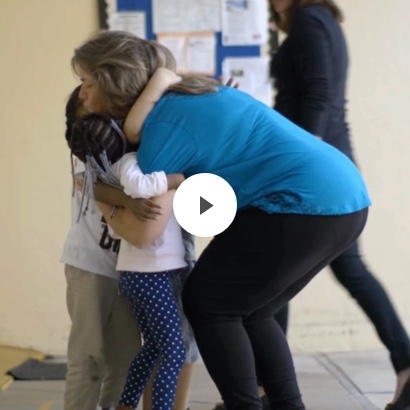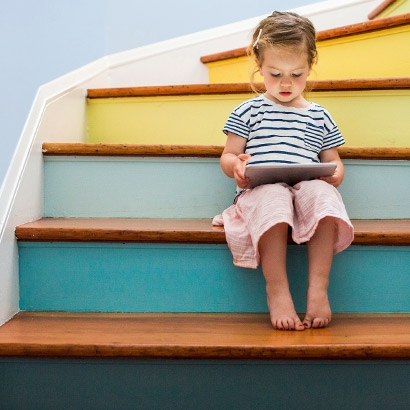Vik Muniz, who left Brazil to make his name in the art world, built Escola Vidigal in a Rio favela, where, with support from partners like Morgan Stanley, children learn to see the world and their unique potential.
“How do you draw fear?” a teacher asks a group of young children one morning at Escola Vidigal, perched high on the slopes overlooking Rio de Janeiro’s famed Ipanema Beach.
For these children of the Vidigal neighborhood, one of the city’s many favelas, Portuguese for shantytown, it’s not a rhetorical question. Poverty and crime are part of the everyday world they inhabit. “But there is also no right answer,” says Fabio Ghivelder, the art director of the Vik Muniz Studio Brazil, which opened the school in 2015. “It’s an exercise that’s intended to make you think.” In search of imagery, the students, ages 4-8, form symbols and shapes in a variety of colors.
You teach children art and it’s not just about acquiring craft, it’s about opening up their eyes
“It’s inspiring to watch as an artist,” says Vik Muniz, who left Brazil as a young adult to explore the New York art world of the 1980s. He now shuttles between his studios in Brooklyn and Rio. Escola Vidigal grew out of Muniz’s work over the years teaching art to children from Rio’s favelas. They reminded him of growing up in similar neighborhoods in Sao Paolo. “I was no different than these kids,” he says.
“You teach children art and it’s not just about acquiring craft, it’s about opening up their eyes, helping them see beyond the everyday world they know,” says Muniz. “When you do that, a bubble pops and their world is immediately changed.”
Here, There and Giving Back
It’s perhaps not that different from the kind of change that has swept much of Brazil over the past two decades, characterized by economic growth, more open markets, and Brazil’s dramatic arrival on the global stage with the hosting of the World Cup Championship in 2014 and the Summer Olympics in 2016. “For Morgan Stanley in Latin America, Brazil is our largest market and among the most diversified economies in which we operate around the world.” says John Moore, Head of Latin America for Morgan Stanley, which recently celebrated its 20th anniversary in Brazil. “Morgan Stanley has established strong ties with corporate and individual clients in Brazil and is the leading investment bank in the country,” he says.
For Muniz, change came only after he moved to New York, where he honed his artistic technique, working in a variety of mediums and with materials as novel as chocolate. Today, his pieces attract mass audiences when on public display around the world. In New York, Muniz has created a series of playful mosaics celebrating everyday riders that are prominently featured at the newly opened Second Avenue subway line. For his contributions to education and social development, UNESCO named Muniz a Goodwill Ambassador in 2011.
At Escola Vidigal, both Muniz and Morgan Stanley have found a way to give back to a local community in Brazil. As Moore says, “The vision and spirit of Escola Vidigal reflect values that we hold dear: creativity, entrepreneurship and our shared commitment to developing the next generation in Brazil and around the world.”
Creative Disruption
Indeed, Muniz hasn’t only created a unique space—more playground and art studio than classroom—but has also partnered with educators at MIT, Columbia University and other educational institutions and nonprofits around the world that want to create a new model for teaching—integrating art, play, performance and technology to revolutionize early education. It’s the kind of program that Morgan Stanley is keen to support. Ultimately, Morgan Stanley raised about $160,000 for Escola Vidigal this year from employee donations and a firm match, funds that Muniz plans to use to grow the school and expand its programming.
For the children, Escola Vidigal provides a safe space to experiment artistically, away from the violence of the favela. Muniz sees the school as a pilot program and would like it to be the first of many schools to teach a curriculum that ranges from sculpture to dance to video. “There is nothing like this in the favela,” says Muniz, who hopes to give these children the tools and skills necessary to one day pursue opportunities in any field of their choice.
Indeed, perhaps today’s group of children trying to sketch fear can grow into a new generation able to envision hope and realize the promise of something as yet unimagined.



